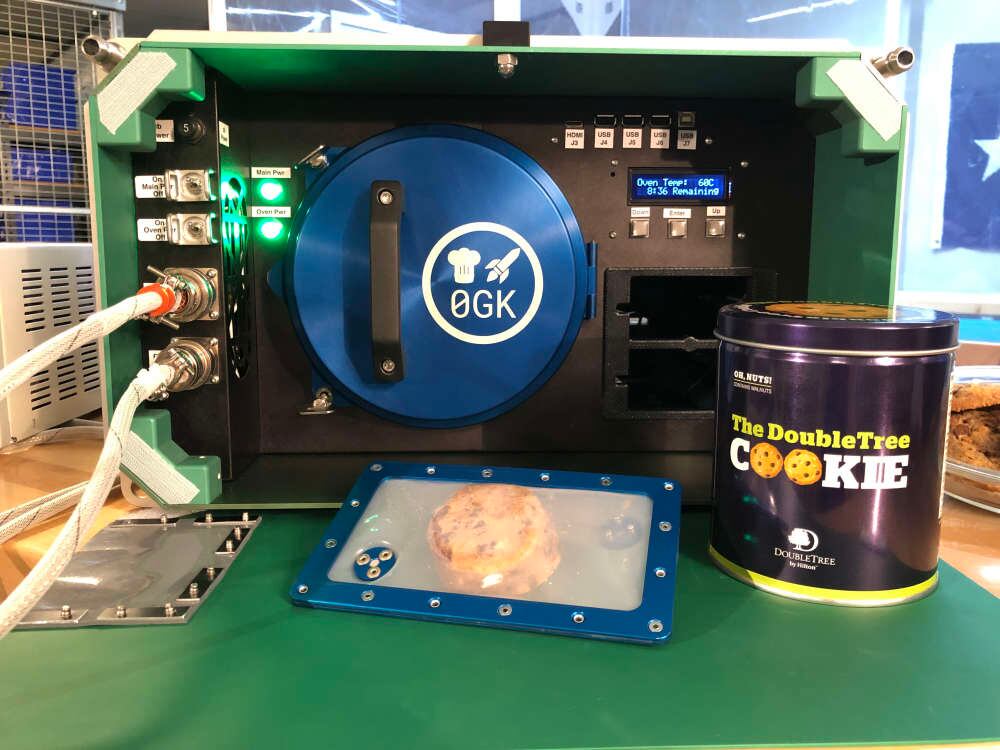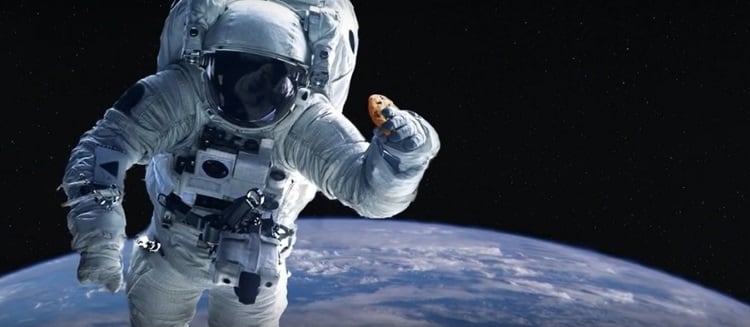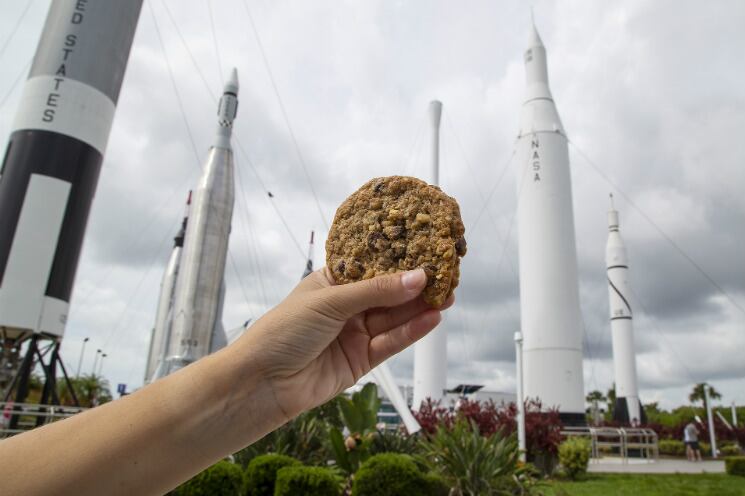A SpaceX Dragon capsule landed in the Pacific earlier this week (January 7) containing almost two tons of gear from the ISS, including a batch of chocolate chip cookies baked by astronaut Christina Koch – who recently broke the record for the longest time spent in space by a woman – and Commander Luca Parmitano of ESA (European Space Agency).
The Cookies in Space project is the result of a collaboration between hotel chain DoubleTree by Hilton, commercial space services provider NanoRacks and Zero G Kitchen, which develops culinary appliances for use in microgravity. The aim is to see if baking in space is both possible and viable as a means of feeding hot food to astronauts during long-duration space travel.
How food behaves in zero gravity

Baking in a space environment is entirely different to baking on Earth.
In standard gravity – the ‘average’ value on Earth’s surface – dough is placed onto a baking sheet, then into an oven, where fans circulate the heat to evenly distribute it around the cookie, causing it to expand and rise.
In space, however, the object being baked doesn’t stay in one location – it floats away – and hot air doesn’t rise, so a conventional oven wouldn’t work.
With that in mind, the astronauts were tasked to bake cookies made from frozen discs of readymade cookie dough provided by DoubleTree, known for giving out warm cookies to guests checking in.
“Our goal is to test how food behaves in microgravity. Will our cookies be flat? Spheres? Fluffy or dense?” asked a DoubleTree spokesperson at the launch.
The ISS was also equipped with the Zero G Kitchen Space Oven, created by Zero G Kitchen and NanoRacks.
As convection is not possible in micro-g due to the lack of gravity, the oven is plugged into the ISS’s electrical system and baking is achieved by heating elements – similar to those found in a toaster oven – that line the walls of an insulated cylinder to ensure the cookie is heated evenly.
Specially designed silicone pouches hold the dough still while baking, allowing steam and hot air to escape but preventing irreverent items like crumbs from floating off.
The oven also features an integrated cooling rack on the outside.
Though the first experiment is focused on baking, Zero G Kitchen has future plans for trays that could allow grilling, pan cook and griddle modes of cooking using the same oven aboard the space station.
If at first you don't succeed...
According to DoubleTree, the ‘bakers’ managed to bake five cookies, one at a time.
Although the space oven is simple to use, it was difficult to know how long to bake the cookies. After three ‘doughy’ results, astronauts Koch and Parmitano managed to produce two that were “nice and brown, with melted chocolate chips.
“The oven is very, very simple to use, and I think it worked as expected,” Parmitano said in a statement provided by NASA.
“We were able to bake the samples, but it took a few attempts to figure out how long they had to stay in the oven.”
None of the cookies were eaten by the astronauts for fear of being undercooked, but instead were frozen and returned to Earth for analysis.
A spokesman for the hotel chain said it plans to share further details of this first-of-its-kind experiment in the coming weeks.



